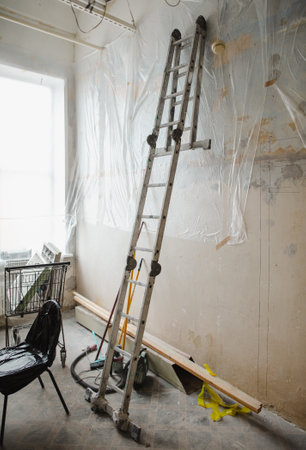1. Understanding the Rent a Room Scheme
If you’re considering letting out a spare room in your main residence, the UK’s Rent a Room Scheme presents an accessible pathway to generate additional income while making the most of your property. Introduced by HM Revenue & Customs (HMRC), this initiative is designed to encourage homeowners and even some tenants to rent out furnished accommodation in their homes. The scheme aims to address housing shortages and support individuals looking to supplement their earnings without getting entangled in complex tax obligations. Essentially, it allows qualifying participants to earn up to a certain threshold each tax year completely tax-free. Whether you’re a homeowner with an unused bedroom or a tenant with your landlord’s consent, the Rent a Room Scheme could be an ideal way to unlock value from your living space. This government-backed programme is particularly advantageous for those seeking low-effort, flexible letting options that fit seamlessly into everyday life.
2. Eligibility Criteria and Key Conditions
The UK’s Rent a Room Scheme offers significant tax advantages for resident landlords, but it is crucial to understand the eligibility criteria and conditions before opting in. This scheme is designed with specific requirements in mind, ensuring only qualifying individuals and properties can benefit. Below, we clarify the fundamental aspects that determine eligibility, from property types to situations where the rules may not apply.
Qualifying Properties
To qualify for the Rent a Room Scheme, the property must be your main home and you must be letting furnished accommodation to a lodger. It applies whether you own or rent your home (with your landlord’s permission if you’re a tenant). The accommodation offered can be a single room or an entire floor, but it must remain part of your primary residence.
| Eligible Property Types | Not Eligible |
|---|---|
| Main residential homes Owner-occupied houses/flats Rented homes (with consent) |
Entirely separate flats Self-contained units not part of the home Holiday lets or second homes |
Resident Landlords
You must be a resident landlord – that is, living in the property while renting out space. Non-resident landlords or those subletting without living on the premises do not qualify under this scheme. The intention is to support homeowners who share their living space rather than professional landlords operating multiple properties.
Lodgers vs. Tenants
The scheme covers income from ‘lodgers’—individuals sharing common areas such as kitchens and bathrooms with you. If you let out self-contained accommodation (with its own bathroom and kitchen), standard rental income tax rules will apply instead.
Situations Where the Rules Don’t Apply
Certain scenarios are excluded from the Rent a Room Scheme:
- If the room is used as an office or business premises by the lodger.
- If your home is converted into separate flats.
- If you’re letting rooms in partnership with another landlord (unless both live on the premises).
- If you let rooms via companies or trusts, rather than as an individual homeowner or tenant.
Summary Table: Applicability of Rent a Room Scheme
| Scenario | Eligible? |
|---|---|
| Lodger shares kitchen/bathroom with resident landlord | Yes |
| Lodger rents self-contained flat within property | No |
| Room let used solely for business purposes by lodger | No |
| Main home shared with permission from landlord (if renting) | Yes |
| Rooms let via company/trust structure | No |
By carefully reviewing these conditions, UK resident landlords can determine whether they qualify for the Rent a Room Scheme and take full advantage of its generous tax-free allowances.
![]()
3. Tax-Free Thresholds and Allowances
The UK’s Rent a Room Scheme offers an attractive opportunity for homeowners to earn extra income with minimal tax obligations. Under the current rules, you can earn up to £7,500 per tax year from letting out furnished accommodation in your main residence without paying any tax on this income. If you share the rental income with another person (such as a partner or joint homeowner), the allowance is split equally, providing each with a £3,750 threshold.
This tax-free threshold operates automatically—you don’t need to do anything if your gross rental receipts are below the limit. However, if your rental earnings exceed the £7,500 threshold, you must declare the full amount on your Self Assessment tax return and either opt into the scheme or calculate your taxable profit using traditional methods (deducting allowable expenses from your rental income).
It’s important to understand what qualifies as eligible income under the scheme. The allowance applies only to gross receipts from renting out furnished accommodation in your main home. This includes rent payments as well as any money received for additional services provided to lodgers, such as meals, cleaning, or laundry. Income from unfurnished rooms, separate flats within your property, or properties that are not your primary residence does not qualify for the scheme.
For savvy homeowners looking to maximise their returns while minimising their tax liability, keeping careful records of all rental income and being clear about which earnings fall within the scope of the Rent a Room Scheme is crucial. With property values and rental demand on the rise across many parts of the UK, taking advantage of this generous allowance can significantly boost your household finances while remaining fully compliant with HMRC regulations.
4. Practical Steps to Register and Report
Successfully taking advantage of the UK’s Rent a Room Scheme requires following the correct registration and reporting process with HMRC. Below is a step-by-step guide to ensure you remain compliant and maximise your tax-free benefits as a landlord.
Step 1: Determine Eligibility
First, confirm that you are eligible for the scheme. You must be letting out furnished accommodation in your main home (not a separate property or an unfurnished room), and the income threshold for tax-free earnings is £7,500 per year (£3,750 if shared with someone else).
Step 2: Decide Whether to Opt In
You can opt in to the scheme each tax year if it suits your circumstances better than deducting actual expenses. If your rental income exceeds the threshold, you must decide whether to pay tax on profits or on the amount over the allowance.
Step 3: Register with HMRC
If your rental income is above the £7,500 threshold or you wish to claim less than the full allowance (for example, due to lower income or higher expenses), you will need to complete a Self Assessment tax return. Use your Government Gateway account to register online by 5 October after the end of the relevant tax year.
Key Deadlines Table
| Action | Deadline |
|---|---|
| Register for Self Assessment | 5 October (after end of tax year) |
| Submit Online Tax Return | 31 January (following tax year) |
| Pay Any Tax Owed | 31 January (following tax year) |
Step 4: Report Your Income Correctly
If you’re under the £7,500 threshold and have no other reason to file a tax return, there’s usually no need to inform HMRC. However, if you exceed this amount, include your gross rental income on the property pages of your Self Assessment form and tick the box confirming you are claiming Rent a Room relief.
Step 5: Maintain Accurate Records
Keep detailed records of all rental income received and any related expenses. This includes tenancy agreements, bank statements showing payments from tenants, receipts for any expenditures, and correspondence with HMRC. Good record keeping is essential in case of future queries or audits.
Step 6: Stay Compliant as a Landlord
Apart from tax matters, ensure compliance with wider landlord obligations such as providing safe accommodation, carrying out Right to Rent checks, and fulfilling local authority requirements where applicable. Staying proactive on all fronts helps protect both your financial interests and your reputation as a responsible landlord.
5. Financial and Investment Considerations
Renting out a room under the UK’s Rent a Room Scheme offers an appealing way to generate extra income, but it is essential to take a measured approach by considering the broader financial and investment implications.
Weighing Up the Benefits
On the plus side, the scheme allows you to earn up to £7,500 per year tax-free, making it an efficient means of boosting your household cash flow. This additional income could help offset rising living costs or even accelerate mortgage repayments. Furthermore, sharing your home can be more straightforward than taking on a full buy-to-let investment, with fewer regulatory hurdles for live-in landlords.
Potential Drawbacks to Consider
However, there are important factors to weigh against these benefits. If you have a mortgage, you must inform your lender before letting out a room, as some agreements may restrict subletting or require additional permissions. Failing to notify your provider could breach your terms and result in penalties or insurance complications.
Insurance Implications
Your existing home insurance policy might not automatically cover lodgers, so it’s prudent to review your coverage. Notifying your insurer ensures that both your property and contents remain protected and helps avoid any disputes should you need to make a claim.
The Bigger Picture: Your Property Investment Strategy
For those building a long-term property portfolio, participating in the Rent a Room Scheme can be an excellent stepping stone. It provides hands-on experience as a landlord with relatively low risk and commitment. However, keep in mind that rental income from lodgers does not count towards buy-to-let income for mortgage affordability calculations if you plan to expand into traditional rental investments later. Ultimately, integrating this scheme into your broader strategy requires careful planning — balancing short-term gains with long-term goals while keeping compliance and protection at the forefront.
6. Best Practices for UK Resident Landlords
Tips for Successful Tenant Relationships
Building and maintaining a positive rapport with your lodger is crucial for a smooth letting experience under the Rent a Room Scheme. Start with a clear, written agreement that outlines house rules, rent due dates, notice periods, and shared responsibilities. Regular communication is key—address issues promptly and be approachable so your tenant feels comfortable raising any concerns. Respecting privacy while being responsive to reasonable requests will help foster trust and long-term satisfaction on both sides.
Maintaining Your Property
As a resident landlord, you remain responsible for the upkeep of your property. Schedule routine inspections (with proper notice) to ensure the room and shared spaces are well-maintained. Promptly address any maintenance or safety issues—such as faulty appliances or smoke alarm checks—to protect both your asset and your tenant’s wellbeing. Keeping your home in good order not only preserves its value but also minimises disputes and turnover.
Securing Your Income and Legal Rights
To safeguard your income, always collect rent on time and issue receipts when payments are made. Consider setting up standing orders for hassle-free transactions. Familiarise yourself with your rights under the Rent a Room Scheme: although many landlord-tenant laws differ from standard tenancies, you still have the right to evict a lodger with reasonable notice if necessary. Keep accurate records of rental income and related expenses to ensure compliance with HMRC requirements, especially if you exceed the tax-free threshold or need to claim allowable deductions.
Additional Tips
- Carry out reference checks before accepting a new lodger.
- Inform your mortgage lender and insurer about your letting arrangements.
- Review your home insurance policy to ensure it covers having a lodger.
Final Thought
Navigating the Rent a Room Scheme successfully requires professionalism and attention to detail. By building respectful tenant relationships, maintaining your property standards, and keeping abreast of your legal responsibilities, you can enjoy steady tax-free income while providing much-needed accommodation in the UK housing market.


